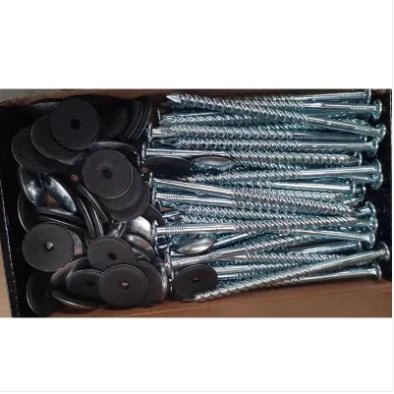Nov . 18, 2024 01:10 Back to list
binding wire
Understanding Binding Wire A Versatile Tool in Construction and Craftsmanship
Binding wire, often overlooked in discussions about construction tools and materials, plays a crucial role in various applications across different industries. This thin, flexible wire is generally made from low-carbon steel and is characterized by its high tensile strength, making it ideal for binding, tying, and securing various items together. Its versatile nature has established binding wire as an indispensable resource in both construction and crafting.
Properties and Composition
The most common type of binding wire is made of mild steel, which is coated to prevent rust and corrosion, thus enhancing its durability. The wire typically comes in various gauges, allowing users to select the appropriate thickness depending on the application requirements. It is generally available in coils, which makes it easy to handle and store. The pliability of binding wire allows for easy maneuvering and shaping, enabling users to create tight, secure binds without much effort.
Applications in Construction
In the construction industry, binding wire is primarily used for tying rebar together to create strong, reinforced concrete structures. As concrete on its own is not strong in tension, the inclusion of steel rebar provides the necessary support and stability. Binding wire plays a crucial role in ensuring that the rebar maintains its intended position during the pouring of concrete.
Another significant use of binding wire is in the assembly and installation of formwork systems. Formwork, which is used to mold concrete into specific shapes, requires strong and secure connections to withstand the weight and pressure of the concrete. Binding wire is used to tie together the components of formwork, ensuring that they remain securely in place until the concrete has set.
binding wire

Moreover, binding wire is used for various other tasks in construction such as securing electrical wires, binding insulation materials, and even for temporary bracing of structures. Its affordability and ease of use make it a go-to option for many contractors and construction workers.
Craftsmanship and Artistic Uses
The versatility of binding wire extends beyond construction into the realm of arts and crafts. In crafting, it is often used for making sculptures, wire art, and jewelry. Artists appreciate the flexibility of binding wire, which allows them to manipulate the wire into intricate designs and forms.
For example, jewelry makers often utilize binding wire to create detailed pieces that require a secure yet delicate hold. Its fine gauge allows for the creation of intricate loops and bindings, providing a professional finish to handmade jewelry. Additionally, in floral arrangements, binding wire is used to secure stems, arrange flowers, and create decorative elements that enhance the overall aesthetic of the arrangement.
Conclusion
In conclusion, binding wire is a small but mighty tool that serves a multitude of purposes in both construction and craftsmanship. Its strength, flexibility, and ease of use make it an essential item for professionals and hobbyists alike. Whether it's tying together rebar at a construction site or crafting a beautiful piece of art, binding wire proves to be an invaluable resource. As industries continue to innovate and explore new applications for binding wire, its importance is likely to grow, solidifying its place in the toolbox of both builders and creators. Understanding and appreciating the myriad uses of binding wire can lead to more efficient practices and heightened creativity in various fields.
-
The Role of Field Wire Fence in Grassland Conservation
NewsJul.15,2025
-
Stainless Steel Razor Wire Durability in Coastal Environments
NewsJul.15,2025
-
Enhancing Home Security with Mesh Fences
NewsJul.15,2025
-
Diamond Mesh Wire for Small Animal Enclosures
NewsJul.15,2025
-
Common Wire Nail Tensile Strength Testing for Woodworking
NewsJul.15,2025
-
Barbed Wire Corrosion Resistance Galvanization Techniques
NewsJul.15,2025









